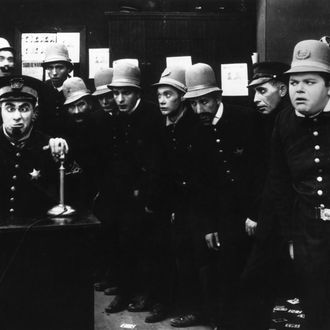
Yesterday was an ominous day for people who worry about the integrity of our financial markets. Columbus/Indigenous People’s Day is one of the two days (the other being Veterans Day) that the stock market is open, but the Securities and Exchange Commission — the primary government agency responsible for policing the stock market — is closed.
The day also brought news from the New York Times that the SEC is trying to get a better handle on high-frequency trading. Its method: Hire a high-frequency trading firm called Tradeworx to build a software program that will, theoretically, allow the SEC to crack down on high-frequency trading firms like Tradeworx.
The program, called “Midas” by the S.E.C., is part of a broader effort at the agency to monitor the proliferation of new technologies and to crack down on practices that have given sophisticated traders an advantage over ordinary investors…With the Tradeworx program, the agency will gain access to every bid to buy stocks and every offer to sell shares on each of the nation’s 13 public exchanges. The system, akin to an X-ray machine for the stock market, could enable regulators to detect whether trading firms are overwhelming the market’s plumbing when they rapidly submit and cancel orders.
The article is pretty damning, in that it makes the SEC look like a bunch of financial Keystone Kops who had, up to this point, been trying to police financial markets running on the equivalent of jetpacks with a horse and buggy. And it provides yet another example of how the deck is stacked in favor of the financial industry on most regulatory issues. But how that deck gets stacked is slightly more interesting.
Many people in and around the financial industry tend to think of the SEC as having with two major strikes against it. (Well, three, if you count porn.)
Strike one is that its annual budget of $1.32 billion — less than half of what Goldman Sachs paid its staff last quarter alone — makes it hard for the agency to have up-to-date equipment and keep up with Wall Street banks in the talent department. Strike two is that the SEC is incapable of aggressively policing the financial system because its top officials frequently make round-trip career moves between the agency and the companies that it regulates, and because Wall Street lobbyists are often able to chip away at laws and regulations that affect the industry. This theory is known as “regulatory capture,” and much ink has been spilled over it.
Many people tend to think of the funding problem and the capture problem separately. But the Tradeworx case shows us that, in fact, they’re deeply interwoven.
Here’s, essentially, what happened: The SEC needed a high-frequency trading platform to be able to keep tabs on that corner of the industry and investigate developments like a “mysterious algorithm” accounting for 4 percent of a week’s volume in near-real time. It priced things out and found that it could either (a) create its own custom-built high-frequency analysis platform, at a huge and uncertain cost, or (b) buy a preexisting system from Tradeworx, which would be just like the ones used by high-frequency trading companies in every way except for the SEC logo in the upper left corner, for a relatively cheap $2.5 million. It chose B.
The plan presented an obvious conflict of interest. (“Reminiscent of the fox guarding the hen house,” is how David Lauer described it to the Times.) As a result, several months from now, the SEC’s primary tool for policing Wall Street misbehavior in the high-frequency trading sector will be entirely designed and built by a high-frequency trading firm. If you’re a person who enjoys spotting examples of regulatory capture at work, you’d flag this. But the SEC’s decision to go with Tradeworx was primarily necessitated by finances. When you’re a relatively poor government agency, you don’t always get the luxury of creating your own tools from scratch.
A similar dynamic was at work in an earlier SEC kerfuffle, flagged by Matt Levine, which revolved around a former SEC commissioner turned Davis Polk lawyer who endeared herself to the SEC by essentially offering to do the agency’s homework. In that case, the SEC’s underfunding/understaffing/laziness meant that it outsourced an analysis of Dodd-Frank, the biggest piece of Wall Street regulatory legislation in decades, to one of Wall Street’s favorite law firms.
It’s enough to make a reform-minded citizen yearn for an extra billion or two on the SEC’s budget line. Having adequate equipment and a staff large enough to handle its workload wouldn’t free the SEC from Wall Street’s grasp overnight, but it would certainly loosen the grip.





























